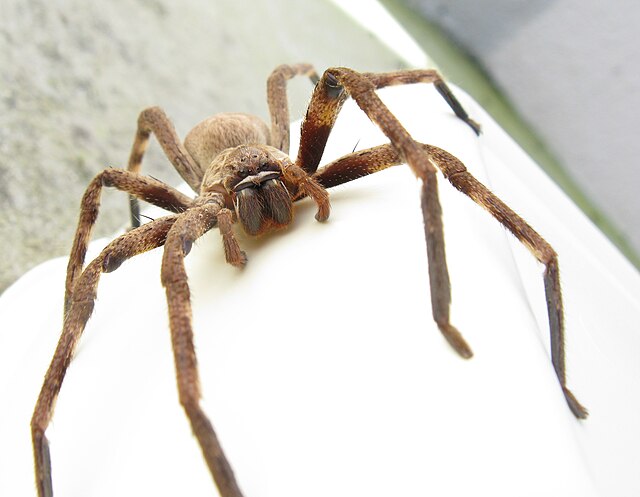Palystes is a genus of huntsman spiders, commonly called rain spiders or lizard-eating spiders, occurring in Africa, India, Australia, and the Pacific. The most common and widespread species is P. superciliosus, found in South Africa, home to 12 species in the genus. The name Palystes is derived from either the Latin palaestes or the Greek palaistes, meaning "wrestler". The genus was first described by Ludwig Carl Christian Koch in 1875.
Palystes
Egg sac of P. castaneus
Tachypompilus ignitus dragging Palystes prey up a wall
Female P. superciliosus
Huntsman spiders, members of the family Sparassidae, are known by this name because of their speed and mode of hunting. They are also called giant crab spiders because of their size and appearance. Larger species sometimes are referred to as wood spiders, because of their preference for woody places. In southern Africa the genus Palystes are known as rain spiders or lizard-eating spiders. Commonly, they are confused with baboon spiders from the Mygalomorphae infraorder, which are not closely related.
Huntsman spider
Palystes superciliosus, ventral aspect, showing aposematic coloration, plus typically masculine gracile build and clavate pedipalps armed with mating spurs
A huntsman spider consuming a small beetle
A female Heteropoda venatoria consuming a katydid







